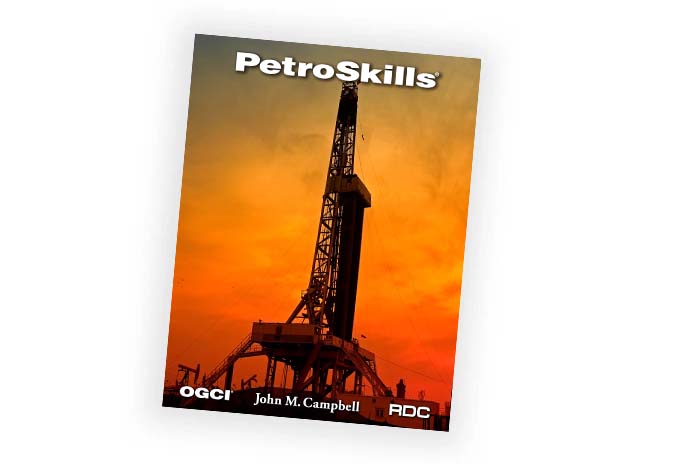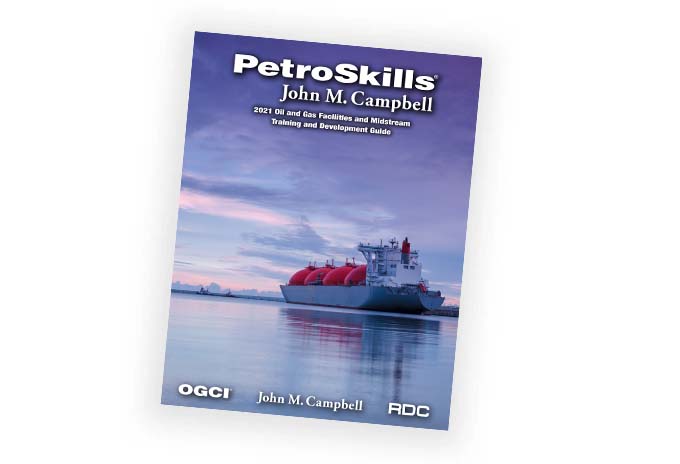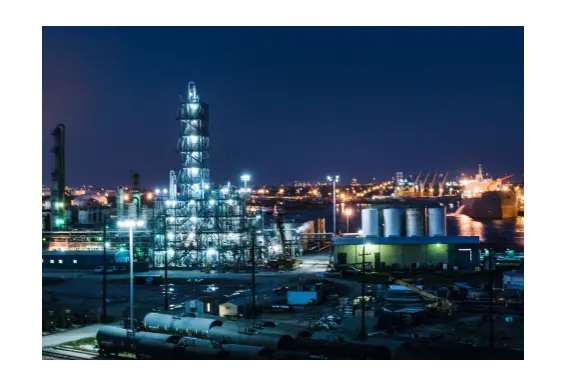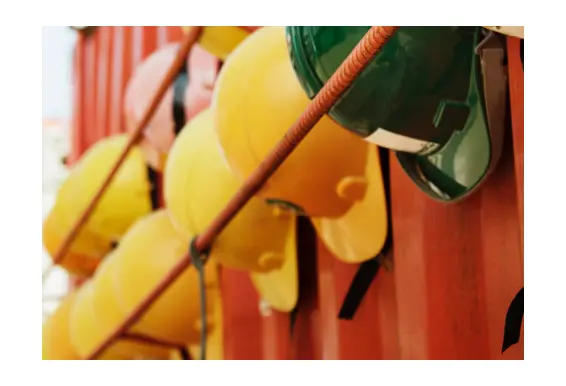Basic Reservoir Engineering - BR - eLearning series
About the Course
This workshop will be delivered virtually through PetroAcademy. Each PetroAcademy offering integrates multiple learning activities, such as self-paced e-Learning, virtual instructor-led sessions, discussion forums, group exercises, case studies, quizzes, field trips, and experiential activities.
This class is available ON-DEMAND, where the instructor-led sessions available as videos.
Activities include 4 hours of prerecorded instructor-led, virtual training sessions, plus approximately 62 hours of self-paced work.
The Basic Reservoir Engineering Blended Program is designed to help the participants develop a more complete understanding of the characteristics of oil and gas reservoirs, from fluid and rock characteristics through reservoir definition, delineation, classification, development, and production. Data collection, integration, and application directed toward maximizing recovery and Net Present Value are stressed. Basic reservoir engineering equations are introduced with emphasis directed to parameter significance and an understanding of the results. For nearly 30 years this has been one of our most popular and successful courses.
Target Audience
Geologists, geophysicists, engineers, engineering trainees, technical managers, technical assistants, technicians, chemists, physicists, technical supervisors, service company personnel, sales representatives, data processing personnel, and support staff working with reservoir engineers and wanting to understand the process of reservoir definition, development, and production, or engineers newly placed in a reservoir engineering position that want a first reservoir engineering course at the Basic level.You Will Learn
-
About the Principal Tasks of a Reservoir Engineer
-
About the Principal Tools of a Reservoir Engineer
-
How this course is organized to cover these topics
RESERVOIR ROCK PROPERTIES
-
Different types of rocks
-
Primary rock properties from a reservoir engineering point of view
-
How rock properties are measured
-
How rock property values are interpolated/extrapolated throughout the reservoir
RESERVOIR ROCK PROPERTIES FUNDAMENTALS
-
Describe the concept of fluid contacts
-
Describe how saturations change when crossing contacts
-
Describe wettability
-
Describe interfacial tension
-
Describe how residual oil saturation is controlled by the interplay of different forces
-
Define capillary pressure
-
Explain how capillary pressure is a combination of several related phenomena
-
Describe how capillary pressure can be used to explain macroscopic reservoir phenomena
-
Show how collecting capillary pressure data can actually save money
-
Discuss the various choices available for measuring relative permeability in the laboratory
-
Discuss the various choices available for measuring capillary pressure in the laboratory
-
Show how reservoir engineers model relative permeability
-
Show how reservoir engineers model capillary pressure
-
Describe how reservoir engineers define saturations
-
Apply concepts discussed in the module to build relative permeability and capillary data datasets
RESERVOIR FLUID
-
Describe how fluids change in response to changes in pressure and temperature
-
Define the engineering properties of reservoir fluids
-
Describe the make-up of reservoir fluids
-
Describe how fluids are sampled
-
Describe how fluid properties are measured in the laboratory
RESERVOIR FLOW PROPERTIES
-
Explain the origin of Darcy's law and how it evolved
-
State the difference between gravity and the pressure gradients, and how they play a role in determining the rate of which fluid could flow in the porous medium
-
Identify the differences between the equations of Linear versus radial flow when calculating the flow
-
Explain how do heterogeneities affect the flow in porous medium, and how Darcy's law can be applied to homogenize to calculate effective permeability
-
Differentiate between oil and gas flow
-
Apply Darcy's law to gas and oil
-
Calculate the amount of fluid that is flowing when you have single cell phase vs single phase oil
-
Describe the Importance of non-Darcy effect on well performance
-
Apply Darcy's law when calculating the rate of the of oil and gas well
-
Identify the differences between layers in parallel and layers in series
-
Discuss the effective permeability of both layers in parallel and layers in series
-
State limitations of Darcy's law
-
Assess the differences between gas and oil reservoirs
-
Describe the effect of non-Darcy flow
RESERVOIR MATERIAL BALANCE
-
Describe the purpose of the material balance technique to estimate the initial hydrocarbons in place
-
Differentiate between volumetric analysis and material balance technique
-
State the basic principle of material balance analysis
-
Describe the principles behind material balance equation
-
Identify the data that is needed to apply the material balance equation and the uncertainties associated with collecting such data
-
Identify the purpose of the modified black oil model in material balance equation
-
State the assumptions involved in applying the material balance equation
-
Identify the limitations of material balance technique
-
Develop the material balance equations from the first principle
-
Identify and explain the different mechanisms influencing the production of hydrocarbons and how they are incorporated in the material balance equation
-
Understand the necessary equations to be used depending on the type of reservoir from which hydrocarbons produce
-
Develop appropriate equations for dry gas, wet gas, condensate, volatile oil and black oil reservoirs
-
Describe modifications of material balance equations to estimate the initial oil and gas in place
-
Explain the Havlena and Odeh method and the appropriate way to linearize the material balance equations
-
Express the importance of water influx and how to detect the presence of aquifer based on production data
-
Recognize the uncertainties associated with predicting the water influx as a function of time
DECLINE CURVE ANALYSIS AND EMPIRICAL APPROACHES
-
Perform Basic Statistics
-
Calculate Decline Curve Analysis
-
Estimate Recovery Factors
RESERVES AND RESOURCES
-
The importance of integration with other disciplines
-
Calculations using the volumetric formulas for gas and oil
-
The importance of dividing into flow units for dynamic reserves in reservoir simulation
-
Reserves management: what it is and how to do it
-
The Reservoir Engineer's input to reserves and resources (R&R)
-
How a Geoscientist and Reservoir Engineer work together on reserves
-
The risk and uncertainty that drive reserves
-
Other non-technical factors that influence R&R
-
The standardized process between reserve estimates
-
The ethical basis underlying R&R estimations
PRESSURE TRANSIENT ANALYSIS
-
Pressure transient analysis concepts, terminology, equations and objectives
-
Pressure transient analysis in buildup and drawdown tests
-
Time period analysis - challenges and objectives
-
Semi-log and log-log analysis
RATE TRANSIENT ANALYSIS
-
Describe the relationship between 'rate transient analysis' and 'pressure transient analysis'
-
Describe the situations under which rate transient analysis would be preferred to pressure transient analysis
RESERVOIR FLUID DISPLACEMENT
-
Fluid displacement as immiscible, linear, and vertical (overcoming gravity)
-
Dispersed and segregated flow
-
Aquifers models
-
Coning in oil/water systems, including when it is most likely to occur, and how to prevent it
ENHANCED OIL RECOVERY
-
Discusses the modification of rock and fluid properties in tertiary recovery
-
Describes (at a high level) the range of secondary and tertiary recovery techniques currently available (and relates them back to rock & fluid properties)
RESERVOIR SIMULATION
-
Describe the physical basis, use and limitations of reservoir simulation models
-
Describe the kind of data required to perform a simulation study
-
Describe the issues and requirements for making rate and recoverable predictions for unconventional reservoirs with simulation tools (UC)
-
Describe the issues and requirements for making rate and recoverable predictions for heavy-oil reservoirs with simulation tools (HO)
RESERVOIR SURVEILLANCE
-
Explain that collecting data has value and cost
-
Describe the different kinds of errors that appear during a measurement event
-
Describe the kinds of measurements which can be used to monitor producing wells
-
Describe the kinds of measurements which can be used to monitor injecting wells
-
Describe the kinds of measurements which can be used to monitor the relationships between wells
-
Outline the use of data integration methods
-
Describe the difference between 'data-driven' and 'model-driven' reservoir surveillance
RESERVOIR MANAGEMENT
-
Retain flexibility in reservoir management without giving up key principles for depletion
-
Build flow units critical to reservoir management of an asset
-
Describe how the value of an asset is defined
-
Explain the roles of risk and uncertainty in that valuation
-
Evaluate vertical equilibrium and no-crossflow, and how to get the most out of each through integrated technologies from multiple disciplines
Course Content
EXAMPLE BLENDED LEARNING WORKSHOP STRUCTURE
This program is comprised of the following activities.
ILT = Virtual Instructor-led Training
OL = Online Learning Activity/Reading
| Unit | Activity | Hours (Est.) | Subject |
| Unit 1 |
ILT |
1.0 | Orientation Webcast (pre-recorded) |
| OL | 1.0 | This is Reservoir Engineering | |
| OL | 3.0 | Reservoir Rock Properties | |
| Unit 2 | ILT | 1.5 | Reservoir Rock Properties Fundamentals |
| OL | 6.0 | Reservoir Rock Properties Fundamentals | |
| ILT | 1.5 | Reservoir Rock Properties Fundamentals | |
| Unit 3 | OL | 9.0 | Reservoir Fluid |
| OL | 3.0 | Reservoir Flow Properties | |
| Unit 4 | OL | 4.0 | Reservoir Material Balance |
| OL | 4.0 | Decline Curve Analysis and Empirical Approaches | |
| Unit 5 | OL | 4.0 | Reserves and Resources |
| OL | 4.0 | Pressure Transient Analysis | |
| Unit 6 | OL | 4.0 | Rate Transient Analysis |
| OL | 4.0 | Reservoir Fluid Displacement | |
| Unit 7 | OL | 4.0 | Enhanced Oil Recovery |
| OL | 4.0 | Reservoir Simulation | |
| Unit 8 | OL | 4.0 | Reservoir Surveillance |
| OL | 4.0 | Reservoir Management | |
| Unit 9 | ILT | 1.5 | Course Summary |
Product Details
Categories:
UpstreamDisciplines:
Reservoir EngineeringLevels:
BasicProduct Type:
CourseInstructors:
Richard HenryAdditional
Request a Public Session
If you are interested in a public session of this course, please click the button below to request it.
Request Public SessionIn-House Training
This course is also available upon request as a private, on-site seminar. Contact us for details and pricing.
Request In-House TrainingNeed Help
Contact us if you have additional questions about how to register for or attend this course.
Contact Us



